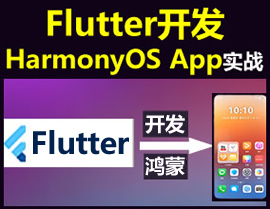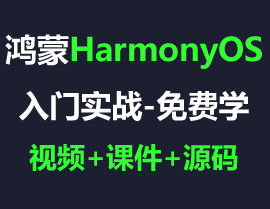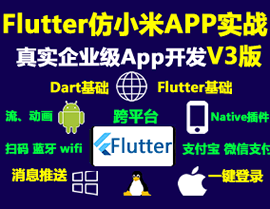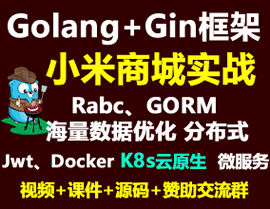HarmonyOS 鸿蒙Next flutter无法加载图片
HarmonyOS 鸿蒙Next flutter无法加载图片 问题描述:鸿蒙化 flutter 使用 cached_network_image 无法加载图片
操作步骤:
已参考 issue 里的回复修改代码,但仍然无法加载图片
参考:https://gitee.com/openharmony-sig/flutter_flutter/issues/I9R10N?from=project-issue
参考下面这个示例代码看下
name: f_ohos_test
description: A new Flutter project.
# The following line prevents the package from being accidentally published to
# pub.dev using `flutter pub publish`. This is preferred for private packages.
publish_to: 'none' # Remove this line if you wish to publish to pub.dev
# The following defines the version and build number for your application.
# A version number is three numbers separated by dots, like 1.2.43
# followed by an optional build number separated by a +.
# Both the version and the builder number may be overridden in flutter
# build by specifying --build-name and --build-number, respectively.
# In Android, build-name is used as versionName while build-number used as versionCode.
# Read more about Android versioning at https://developer.android.com/studio/publish/versioning
# In iOS, build-name is used as CFBundleShortVersionString while build-number is used as CFBundleVersion.
# Read more about iOS versioning at
# https://developer.apple.com/library/archive/documentation/General/Reference/InfoPlistKeyReference/Articles/CoreFoundationKeys.html
# In Windows, build-name is used as the major, minor, and patch parts
# of the product and file versions while build-number is used as the build suffix.
version: 1.0.0+1
environment:
sdk: '>=2.19.6 <3.0.0'
# Dependencies specify other packages that your package needs in order to work.
# To automatically upgrade your package dependencies to the latest versions
# consider running `flutter pub upgrade --major-versions`. Alternatively,
# dependencies can be manually updated by changing the version numbers below to
# the latest version available on pub.dev. To see which dependencies have newer
# versions available, run `flutter pub outdated`.
dependencies:
flutter:
sdk: flutter
# The following adds the Cupertino Icons font to your application.
# Use with the CupertinoIcons class for iOS style icons.
cupertino_icons: ^1.0.2
cached_network_image: ^3.2.3
dev_dependencies:
flutter_test:
sdk: flutter
flutter_lints: ^2.0.0
dependency_overrides:
path_provider:
git:
url: "https://gitee.com/openharmony-sig/flutter_packages.git"
path: "packages/path_provider/path_provider"
sqflite:
git:
url: "https://gitee.com/openharmony-sig/flutter_sqflite.git"
path: "sqflite"
# For information on the generic Dart part of this file, see the
# following page: https://dart.dev/tools/pub/pubspec
# The following section is specific to Flutter packages.
flutter:
# The following line ensures that the Material Icons font is
# included with your application, so that you can use the icons in
# the material Icons class.
uses-material-design: true
# To add assets to your application, add an assets section, like this:
# assets:
# - images/a_dot_burr.jpeg
# - images/a_dot_ham.jpeg
# An image asset can refer to one or more resolution-specific "variants", see
# https://flutter.dev/assets-and-images/#resolution-aware
# For details regarding adding assets from package dependencies, see
# https://flutter.dev/assets-and-images/#from-packages
# To add custom fonts to your application, add a fonts section here,
# in this "flutter" section. Each entry in this list should have a
# "family" key with the font family name, and a "fonts" key with a
# list giving the asset and other descriptors for the font. For
# example:
# fonts:
# - family: Schyler
# fonts:
# - asset: fonts/Schyler-Regular.ttf
# - asset: fonts/Schyler-Italic.ttf
# style: italic
# - family: Trajan Pro
# fonts:
# - asset: fonts/TrajanPro.ttf
# - asset: fonts/TrajanPro_Bold.ttf
# weight: 700
# For details regarding fonts from package dependencies,
# see https://flutter.dev/custom-fonts/#from-packages
# This section identifies your Flutter project as a module meant for
# embedding in a native host app. These identifiers should _not_ ordinarily
# be changed after generation - they are used to ensure that the tooling can
# maintain consistency when adding or modifying assets and plugins.
# They also do not have any bearing on your native host application's
# identifiers, which may be completely independent or the same as these.
module:
iosBundleIdentifier: com.example.flutterModule
main.dart
import 'package:cached_network_image/cached_network_image.dart';
import 'package:flutter/material.dart';
import 'package:path_provider/path_provider.dart';
void main() {
runApp(const MyApp());
}
class MyApp extends StatelessWidget {
const MyApp({super.key});
// This widget is the root of your application.
@override
Widget build(BuildContext context) {
return MaterialApp(
title: 'Flutter Demo',
theme: ThemeData(
// This is the theme of your application.
//
// Try running your application with "flutter run". You'll see the
// application has a blue toolbar. Then, without quitting the app, try
// changing the primarySwatch below to Colors.green and then invoke
// "hot reload" (press "r" in the console where you ran "flutter run",
// or simply save your changes to "hot reload" in a Flutter IDE).
// Notice that the counter didn't reset back to zero; the application
// is not restarted.
primarySwatch: Colors.blue,
),
home: const MyHomePage(title: 'Flutter Demo Home Page'),
);
}
}
class MyHomePage extends StatefulWidget {
const MyHomePage({super.key, required this.title});
// This widget is the home page of your application. It is stateful, meaning
// that it has a State object (defined below) that contains fields that affect
// how it looks.
// This class is the configuration for the state. It holds the values (in this
// case the title) provided by the parent (in this case the App widget) and
// used by the build method of the State. Fields in a Widget subclass are
// always marked "final".
final String title;
@override
State<MyHomePage> createState() => _MyHomePageState();
}
class _MyHomePageState extends State<MyHomePage> {
int _counter = 0;
void _incrementCounter() {
getTemporaryDirectory();
setState(() {
// This call to setState tells the Flutter framework that something has
// changed in this State, which causes it to rerun the build method below
// so that the display can reflect the updated values. If we changed
// _counter without calling setState(), then the build method would not be
// called again, and so nothing would appear to happen.
_counter++;
});
}
@override
Widget build(BuildContext context) {
// This method is rerun every time setState is called, for instance as done
// by the _incrementCounter method above.
//
// The Flutter framework has been optimized to make rerunning build methods
// fast, so that you can just rebuild anything that needs updating rather
// than having to individually change instances of widgets.
return Scaffold(
appBar: AppBar(
// Here we take the value from the MyHomePage object that was created by
// the App.build method, and use it to set our appbar title.
title: Text(widget.title),
),
body: Center(
// Center is a layout widget. It takes a single child and positions it
// in the middle of the parent.
child: Column(
// Column is also a layout widget. It takes a list of children and
// arranges them vertically. By default, it sizes itself to fit its
// children horizontally, and tries to be as tall as its parent.
//
// Invoke "debug painting" (press "p" in the console, choose the
// "Toggle Debug Paint" action from the Flutter Inspector in Android
// Studio, or the "Toggle Debug Paint" command in Visual Studio Code)
// to see the wireframe for each widget.
//
// Column has various properties to control how it sizes itself and
// how it positions its children. Here we use mainAxisAlignment to
// center the children vertically; the main axis here is the vertical
// axis because Columns are vertical (the cross axis would be
// horizontal).
mainAxisAlignment: MainAxisAlignment.center,
children: [
const Text('You have pushed the button this many times:'),
Text(
'$_counter',
style: Theme.of(context).textTheme.headlineMedium,
),
Container(
width: 300,
height: 300,
color: Colors.yellow,
child: CachedNetworkImage(
imageUrl: 'https://pics7.baidu.com/feed/a71ea8d3fd1f4134f8bb678f9181afc4d3c85edb.jpeg',
fit: BoxFit.fill,
),
// child: Image.network(
// 'https://pics7.baidu.com/feed/a71ea8d3fd1f4134f8bb678f9181afc4d3c85edb.jpeg'),
),
],
),
),
floatingActionButton: FloatingActionButton(
onPressed: _incrementCounter,
tooltip: 'Increment',
child: const Icon(Icons.add),
), // This trailing comma makes auto-formatting nicer for build methods.
);
}
}
手机版本Next0.0.26
[!] Flutter (Channel dev, 3.7.12-ohos, on Microsoft Windows [版本 10.0.19045.4412], locale zh-CN)
• Flutter version 3.7.12-ohos on channel dev at C:\Users\LWX1307250\flutter_flutter
! Upstream repository https://gitee.com/openharmony-sig/flutter_flutter.git is not a standard remote.
Set environment variable "FLUTTER_GIT_URL" to https://gitee.com/openharmony-sig/flutter_flutter.git to dismiss
this error.
• Framework revision 01908698db (6 days ago), 2024-07-11 12:42:01 +0000
• Engine revision 1a65d409c7
• Dart version 2.19.6
• DevTools version 2.20.1
• Pub download mirror https://pub.flutter-io.cn
• Flutter download mirror https://storage.flutter-io.cn
• If those were intentional, you can disregard the above warnings; however it is recommended to use "git" directly
to perform update checks and upgrades.
更多关于HarmonyOS 鸿蒙Next flutter无法加载图片的实战系列教程也可以访问 https://www.itying.com/category-92-b0.html
针对HarmonyOS鸿蒙系统中Next flutter无法加载图片的问题,可能的原因及解决方法如下:
-
资源路径错误: 检查图片资源的路径是否正确。在Flutter中,图片资源通常放置在
assets文件夹下,并在pubspec.yaml文件中正确配置。确保路径与配置一致,且文件名无误。 -
权限问题: 如果图片来源于外部存储,需要确保应用已获取读取外部存储的权限。在鸿蒙系统中,权限管理可能有所不同,需参考鸿蒙开发文档进行配置。
-
图片格式不支持: 检查图片格式是否为Flutter所支持。常见支持的图片格式包括PNG、JPEG等。如果图片格式不被支持,尝试转换格式。
-
网络图片加载问题: 如果加载的是网络图片,确保网络连接正常,且图片URL有效。同时,检查是否有网络请求相关的限制或错误。
-
Flutter引擎或插件问题: 确保Flutter引擎和相关插件版本与鸿蒙系统兼容。有时,插件或引擎的更新可能修复了加载图片的问题。
如果问题依旧没法解决请联系官网客服,官网地址是 https://www.itying.com/category-93-b0.html,








